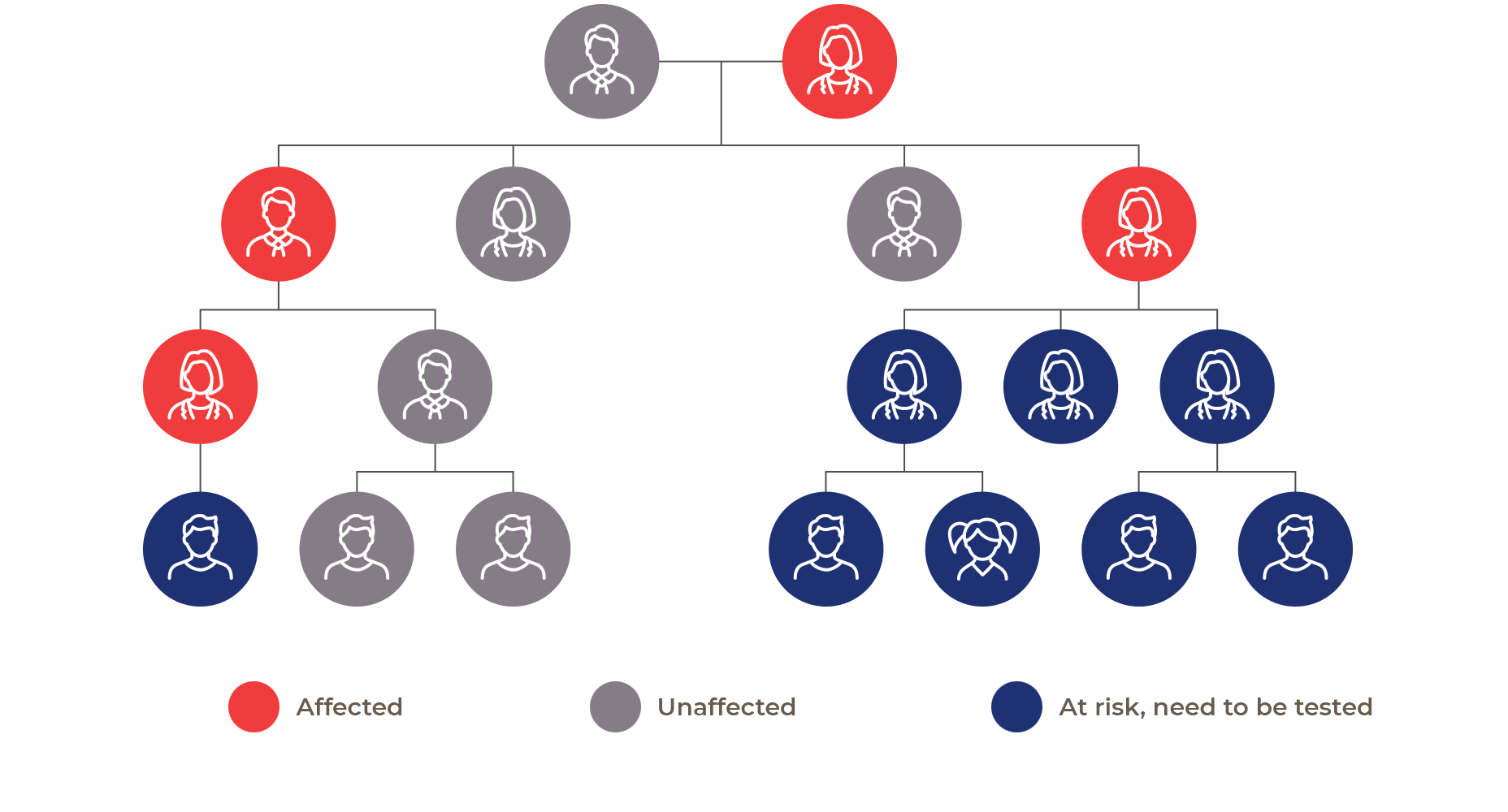Patient experience
Fabry disease has a profound emotional and physical impact on affected individuals and their families.1 Disease manifestations in patients with the same gene mutation, even males from the same family, may vary, making counselling difficult.1
The patient journey with Fabry disease
Fabry disease has a profound emotional and physical impact on affected individuals and their families.1 Disease manifestations in patients with the same gene mutation, even males from the same family, may vary, making counselling difficult.1
Alongside the physical symptoms, patients can feel anxiety concerning disease progression, guilt related to passing the disease on to children, and other strong emotions such as anger, grief or hopelessness.1 Their self-esteem and self-identity can also be affected.1 Genetic counselling is critical following diagnosis to provide patients with a better understanding of their condition.1
Fabry disease may affect women and men differently
The conception of the expression of Fabry disease in females has drastically changed over the last decade.2 Female heterozygotes were erroneously described as “carriers of the defective gene” more or less safeguarded against developing disease manifestations and symptoms.3
Disease expression in females is variable, and clinical phenotypes range from asymptomatic patients to women with disease manifestations as severe as observed in classically affected males.2
In female patients with Fabry disease:

Their alpha-galactosidase A activity may be within the normal range and therefore, the definitive diagnostic confirmation should be made by genetic analysis in suspected cases.3

Onset of symptoms has been reported to occur at a mean age of 9 years in boys and 13 years in girls.2

A high percentage of females develop vital organ involvement including the kidneys, heart and/or brain about a decade later than males.3
Female patients should be assessed and monitored in a manner similar to that recommended for men.1

Resources
- Recommended assessments and schedule for monitoring organ involvement in adult patients with Fabry disease
- Recent publications
Fabry families – Family tree and genetics
Screening family members
Clinical and genetic screening of the at-risk members of families of newly diagnosed patients is of critical importance, as additional family members with Fabry disease may be identified from each individual index patient. One pedigree review study found that, on average, there were at least five family members diagnosed with Fabry disease following the diagnosis of a patient.1

Fabry disease inheritance patterns
Parents should be informed about the likelihood that siblings, relatives, and future children will inherit the disease. Affected mothers have a 50% chance of passing the defective gene on to all offspring whether boys or girls. Sons who inherit the gene will be affected; her daughters may display a spectrum of clinical involvement.2
Fathers with Fabry disease pass on the defective gene to none of their sons and all of their daughters. Previously unrecognized family members, males and females, can be identified at an early stage of the disease via screening for the mutation among family members.2
Family planning
Pre-conception or prenatal genetic counselling should be offered to all male and female patients of reproductive age, discussing Fabry disease’s X-linked pattern of inheritance, availability of both prenatal diagnosis using cultured amniocytes or chorionic villi for molecular testing and preimplantation genetic diagnosis for selection of unaffected embryos.1
Pre-conception genetic counselling is important when pregnancy is being considered, as some adjunctive therapies routinely used to treat Fabry symptoms are teratogenic and may pose a risk to fetal development.1
The past decade has witnessed an increased understanding of the pathogenesis, natural history, and prevalence of Fabry disease, and the effectiveness and limitations of specific treatments.2 The advances have changed our approach to disease monitoring and therapeutic intervention, leading to updated Fabry disease treatment guidelines.2
As our understanding of Fabry disease grows, is it time to rethink what’s possible for patients?
References
- Ortiz A, et al. Mol Genet Metab. 2018;123(4):416-427.
- Martins, AM, et al. The Journal of pediatrics. 2009;155(4): S19-S31.
- Germain DP. Fabry disease. Orphanet J Rare Dis. 2010;5:30.